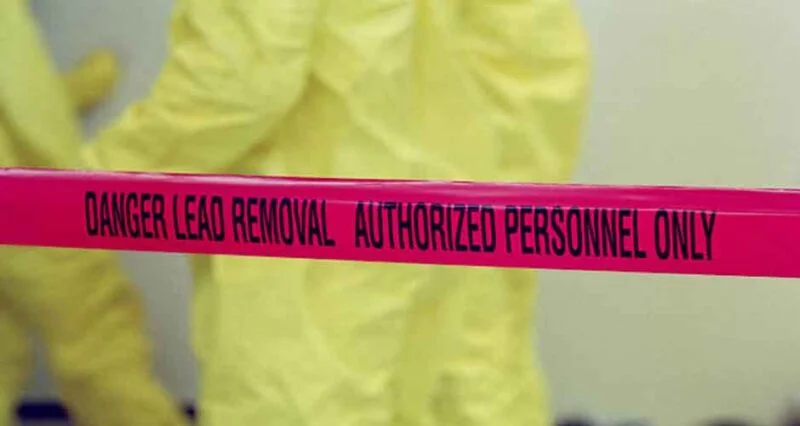
As science makes breakthroughs in understanding how our world affects our health, it feels like every day we learn that something we frequently use is secretly poisonous. For years, lead was a highly sought-after ingredient in paints for home improvement projects, but now we know exposure to it can have serious health concerns. So before you invest in that 1980s-built house, or move into that rustic apartment, you should know the signs of lead-based paint hazards in a rental. So stick around till the end to find out:
Ask for Renovation History
Before it was completely banned in the US, lead was an important ingredient in paint to speed up the drying process and make it last longer. Unfortunately, it also comes with severe health effects, forcing the government to prohibit its use in 1978. Despite the prevention orders on new housing projects and renovations from using lead, tenants in older homes are still at risk of suffering from lead poisoning.
As a result, landlords need to ask about a home’s renovation history before investing. Take note of the year the house was built as confirmation that it is lead-free. Despite its illegal nature, many contractors continued using lead-based paint into the late 90s. Besides, if you find a prime property with lead-based paint, you can work with a local property manager in Harford County to assist in handling maintenance and potential hazards.
Tenants should also take responsibility for their safety by asking the property owner directly. While landlords are legally required to inform a tenant if a rental has lead-based paint, some sketchy ones could try to hide it in the lease. Thus, it’s essential for renters to also ask about the house’s renovation history and understand your state’s laws on lead disclosure.
Signs of Lead-Based Paint Hazards
Recognizing the signs of lead-based paint could prevent further accumulation in the body. While there are hardly any symptoms from a short-term stay, prolonged exposure can cause debilitating side effects such as headaches, loss of appetite, weight loss, fatigue, abdominal pain, vomiting, and even seizures.
Younger children are particularly at risk because they’re more likely to lick or chew on furniture that has been exposed to lead paint. In other words, children are more susceptible to lead poisoning through direct ingestion or contact. Aside from the symptoms listed above, they can also experience learning difficulties, tingling in their limbs, behavioral changes, and developmental defects.
However, these symptoms aren’t isolated to lead poisoning. The suggested way is to contact and confirm with a certified lead inspector. When inspecting rentals for lead-based paint, it’s important to work with professionals who can test your home and alert you if something is amiss. Generally, lead-based paint is only hazardous if it’s chipped or deteriorating. Thus, houses with an old paint job showing signs of cracks, bubbling, and chalking are more likely to release toxic substances in the air. With that said, if you already have prior notice of your rental containing lead-based paint, it’s essential to conduct inspections that ensure the interior walls are in good condition.
Can Tenants Sue Landlords for Lead-Based Paint Hazards?
Landlords have the responsibility to ensure their rental is safe at all times, while tenants have the right to sue their landlords due to exposure to lead-based paint. Here are some of the legal reasons you can take your landlord to court:
1. Failure to Disclose Known Lead Hazards
Whether the property owner fails to withhold information about lead hazards out of ignorance or cunning, renters can still hold them liable for not disclosing such information. Tenants have the right to be privy to any fact that might influence their living choices, so if you weren’t properly informed about lead-based paint in a house before moving in, you could have a valid court case.
2. Unwarranted Medical Bills
As we highlighted earlier, lead poisoning has several side effects, especially for children, and paying for medical services to treat this condition can be expensive. Even with insurance, it would still be unjust for you to pay for someone else’s neglect, not to mention the emotional distress of hospital visits and lost wages from hospital trips or sick leave. Thus, if you have to seek medical attention for a case of lead poisoning, you can use your receipts as evidence in an official claim.
Security Deposit and Rental Payments
Besides medical bills, lead poisoning can also force tenants to look for alternative accommodation, especially if the landlord doesn’t make an effort to cover it up. As a result, renters might have to forego a certain portion of their rent or security deposit in search of better housing. This inconvenience can work against property owners who fail to take prompt action to rectify the situation and still withhold the tenants’ money after they’ve moved out.
Conclusion
Lead poisoning can have severe health consequences which is why landlords and tenants need to be on guard. It’s essential to ask about the renovation history of a house, as this information can tell you how likely you are to experience exposure to such toxins. On the other hand, both parties should be aware of the signs of lead-based paint so they can act fast in subverting this hazard. The general rule of thumb is to hire an expert who may detect and confirm if lead-based paints are present in the house, but property owners should also consider extra help. Property managers may count as extra help to contact professionals and manage such hazards carefully, keeping your tenants safe in the long run and helping you avoid lawsuits.

